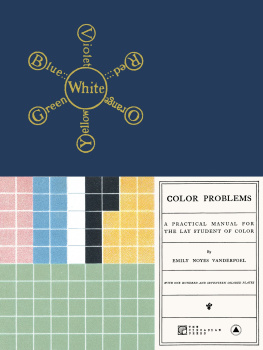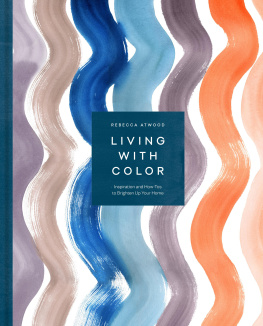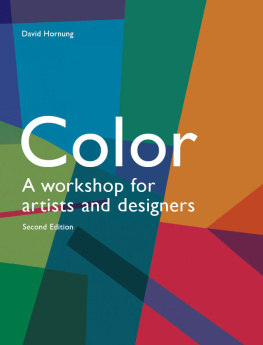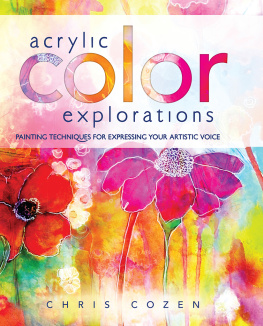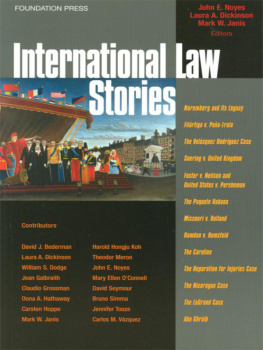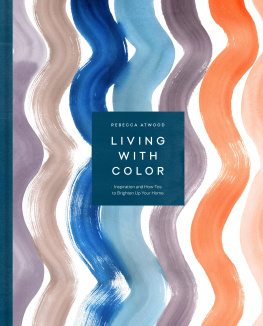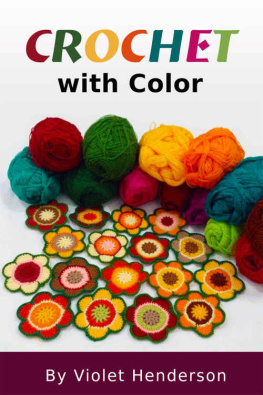Emily Noyes Vanderpoel - Color Problems: A Practical Manual for the Lay Student of Color
Here you can read online Emily Noyes Vanderpoel - Color Problems: A Practical Manual for the Lay Student of Color full text of the book (entire story) in english for free. Download pdf and epub, get meaning, cover and reviews about this ebook. year: 2018, publisher: Sacred Bones Books, genre: Art. Description of the work, (preface) as well as reviews are available. Best literature library LitArk.com created for fans of good reading and offers a wide selection of genres:
Romance novel
Science fiction
Adventure
Detective
Science
History
Home and family
Prose
Art
Politics
Computer
Non-fiction
Religion
Business
Children
Humor
Choose a favorite category and find really read worthwhile books. Enjoy immersion in the world of imagination, feel the emotions of the characters or learn something new for yourself, make an fascinating discovery.
- Book:Color Problems: A Practical Manual for the Lay Student of Color
- Author:
- Publisher:Sacred Bones Books
- Genre:
- Year:2018
- Rating:4 / 5
- Favourites:Add to favourites
- Your mark:
- 80
- 1
- 2
- 3
- 4
- 5
Color Problems: A Practical Manual for the Lay Student of Color: summary, description and annotation
We offer to read an annotation, description, summary or preface (depends on what the author of the book "Color Problems: A Practical Manual for the Lay Student of Color" wrote himself). If you haven't found the necessary information about the book — write in the comments, we will try to find it.
Color Problems: A Practical Manual for the Lay Student of Color — read online for free the complete book (whole text) full work
Below is the text of the book, divided by pages. System saving the place of the last page read, allows you to conveniently read the book "Color Problems: A Practical Manual for the Lay Student of Color" online for free, without having to search again every time where you left off. Put a bookmark, and you can go to the page where you finished reading at any time.
Font size:
Interval:
Bookmark:

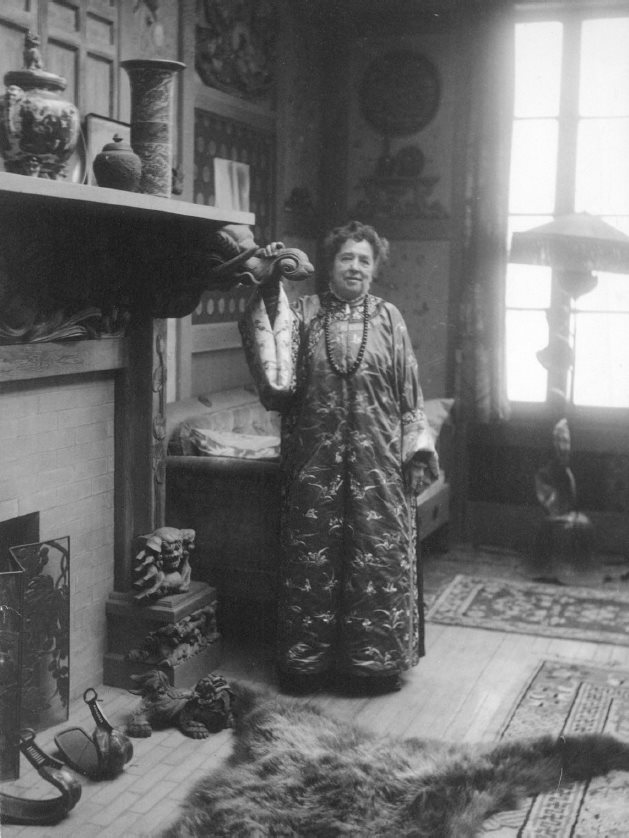
Emily Noyes Vanderpoel in her New York studio. Courtesy Litchfield Historical Society.
Color Problems
Copyright 1901 Emily Noyes Vanderpoel
All rights reserved. No part of this publication may be reproduced, stored in a retrieval system, or transmitted in any form or by any means, electronic, mechanical, photocopying, recording, or otherwise, without written permission of the publisher.
ISBN: 978-0-9996099-3-4
Published by The Circadian Press with Sacred Bones Books, 2018.
3 4 5 6 7 8 9 10
All requests and correspondence can be addressed to:
Sacred Bones Books
144 N.7th Street #413
Brooklyn, NY 11249
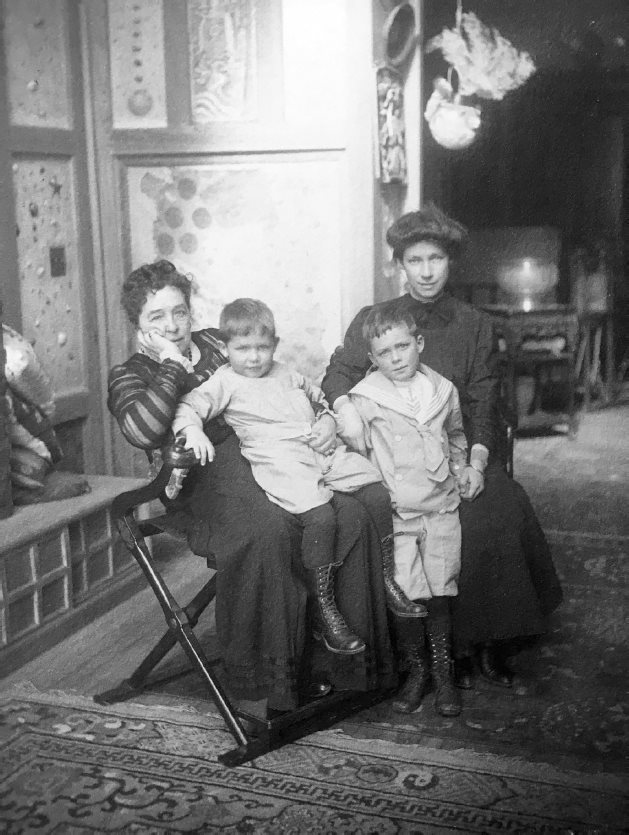
Emily Noyes Vanderpoel with Gramercy Park neighbors. Courtesy Litchfield Historical Society.
TO CAPTURE THE MUSIC OF LIGHT
In the Hall of Honor of the Womans Building at the 1893 Chicago Worlds Columbian Exposition hung a watercolor painting titled The Spirit of the 19th Century. It was among those awarded the fairs highest jury commendation a bronze medal designed by Augustus Saint-Gaudens and was the work of a 51-year-old artist named Emily Noyes Vanderpoel, the author of this fascinating book and creator of the prescient works of art held within. [1]
Vanderpoel paints a scene overlooking an urban rail yard of intertwined tracks laid on raw wet earth reflecting a violet grey sky. On the tracks a trio of engines shuttle coal cars beneath a long iron bridge spanning the yards red brick walls. A single smokestack rises behind and telegraph poles carry wires off into the distance. The engines trail of swirling white steam fade to pink in the compositions color harmony of red tones. [2]
Accompanied in the Hall by the more conventional portraits, landscapes and allegorical figures painted by her fellow awardees, Vanderpoels unique expression of the terrible beauty of the industrial infrastructure driving the era yields a sliver of insight into an artist of whom many key traces have since been lost. Lost like traces of a painting titled Ypres which was said to have hung in the National Art Museum in Washington D.C. [3] Lost like a cache of her personal papers thought to be discarded by her grandsons wife. [4]
Scion of a prominent colonial family, and of a stern and industrious stock that was part of her character [5], Vanderpoel divided her time between New York City and Litchfield, Connecticut. A connoisseur and collector of a wide range of cultural artifacts, Vanderpoel was a proud Daughter of the American Revolution, and a generous local philanthropist. She was a champion of girls education, womens means for advancement, and societys knowledge and cultivation of traditional craft. [6]
Widowed before the birth of her only son [7], Vanderpoel as an artist and author was active in New Yorks creative community, centered around the American Fine Arts Building on West 57th Street. The building nurtured an interdisciplinary mix of organizations including the American Watercolor Society, and the break-off New York Watercolor Club the first such co-ed association of its time, where she served as president. It also held the American Fine Arts Society, the influential Art Students League, and held exhibitions and events for the Architectural League and the National Academy of Design, among other organizations. The American Fine Arts Building was frequently a venue for lectures on fine art and applied arts and sciences, color science included [8]. In short, Emily Noyes Vanderpoel was a remarkably independent Victorian woman with great access and much more than Virginia Woolfs requisite money and a room of ones own.
At the turn of the 20th century, Vanderpoel published Color Problems, a Practical Manual for the Lay Student of Color, along with two other works: the 465-page first volume of Chronicles of a Pioneer School, and a set of charming and technically astute illustrations for the Tale of the Spinning Wheel by Cynthia Barney Buell [9]. She continued to author books and exhibit paintings into her last decade, before her death at the age of 96 [10]. Vanderpoel had a foot firmly in both centuries. She experienced the quickening of the 1800s into the speeding 1900s.
The Worlds Columbian Exposition, ushering in the new century, presented possibilities and means for the final distribution of the industrial revolution out of the factory and into homes, workshops, and classrooms, for the betterment of daily life. Her participation there seems to have inspired the long project of Color Problems. Vanderpoel would have been impressed by the advancements in science and technology, as well as the comprehensive displays of historical and contemporary fine arts found at the fair. Crafts from worlwide cultures were also on display at the Fair, which was attended by nearly a quarter of the nations population. It was there that she may have been introduced to the inventor and publisher of arts educational materials Milton Bradley, who was displaying his Color Machine, patented that same year [11]. Many informed hands would be needed to direct the technological and aesthetic promise of the coming century.
Despite the future-oriented work in many of the Columbian Expositions displays, the architecture and planning of the greatly influential White City, as the campus was known, was itself a study in neoclassical Beaux Arts composition, an historical revival style that was on the rise in architecture and urban planning. In the fine and decorative arts, such historicism had already begun its long decline, amidst the nascent beginnings of new styles not yet precisely nameable. Developments that this book has become an important early example of.
While Mr. Bradleys work went on to educate future public school teachers about color and its science [12], Vanderpoel engaged her passion for craft production, the valuable work of women, the ornamental and the exotic. Her aim was to teach color to the non-artist and the non-arts-educator. It was intended for those in the practical arts and for the common citizen making things, especially women whose hands were being made idle by the rise of household technologies. [13] In this two-part book, she accomplished more than that.
One wont find a more concise summary of the contemporary technical literature on color than what is given in the first part of this book. However, in the creation of her own method to teach the practical observation and notation of color, Vanderpoel achieves a wholly original and thoroughly modern series of works: The 54 Color Analyses and the 15 freeform Color Notes we find in the books 117 color plates. The Analyses are observations mainly of inanimate decorative objects and are of a more interior nature, described in the chapter Historic Color, while the Notes are observations of more fleeting moments and natural phenomena outdoors, described in the chapter Natural Color.
The freeform Notes might be said to be highly influenced by the works of the prolific art teacher and color theorist Mary Gartside, who was working at the transition of the 18th to 19th Centuries. Vanderpoels Notes are significantly different, however, in that they are not only illustrations of the production of effects of adjacent colors coming from theory, but are abstract paintings of observed scenic color.
In the case of the unprecedented
Next pageFont size:
Interval:
Bookmark:
Similar books «Color Problems: A Practical Manual for the Lay Student of Color»
Look at similar books to Color Problems: A Practical Manual for the Lay Student of Color. We have selected literature similar in name and meaning in the hope of providing readers with more options to find new, interesting, not yet read works.
Discussion, reviews of the book Color Problems: A Practical Manual for the Lay Student of Color and just readers' own opinions. Leave your comments, write what you think about the work, its meaning or the main characters. Specify what exactly you liked and what you didn't like, and why you think so.

